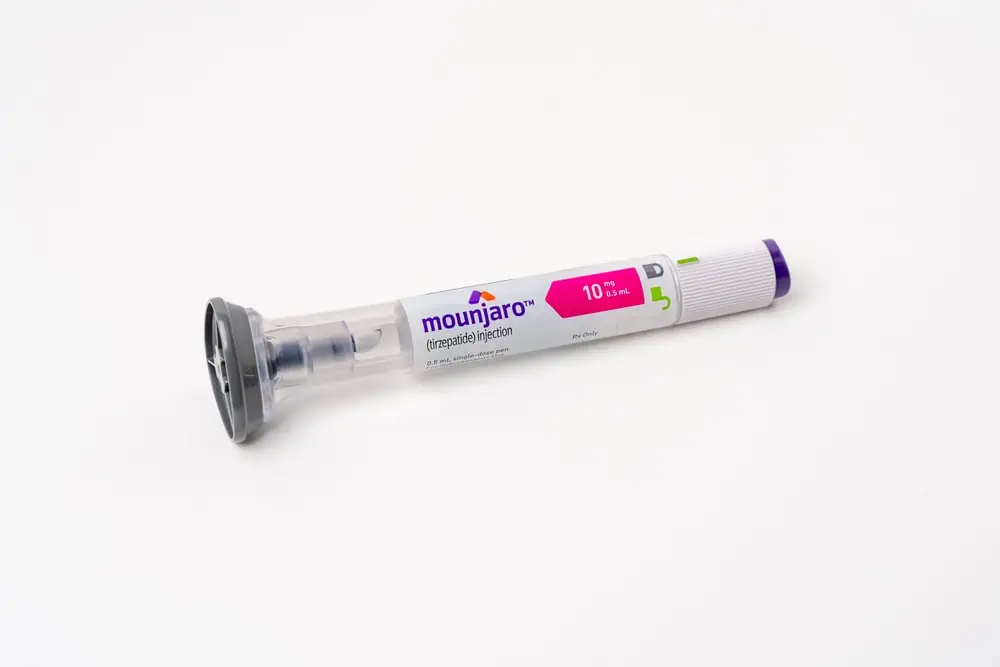Selective Nerve Root Blocks (SNRB) are a specialized procedure aimed at diagnosing and managing pain that originates from the spinal nerves. As pain management evolves, this minimally invasive technique allows us to precisely target and deliver medication to the affected nerve root. Positioned along the spinal column, these nerve roots can become inflamed due to conditions such as a herniated disc or spinal stenosis, leading to discomfort and pain. By administering a combination of a local anesthetic and a steroid, we directly address the inflammation and interrupt the transmission of pain signals to the brain.

Our approach to this treatment is both diagnostic and therapeutic. By observing how the nerve responds to the injection, we can determine if the targeted nerve root is indeed the source of pain. This dual-purpose action provides us with a strategic advantage in both identifying and treating the root cause. When it comes to management, the procedure offers significant relief for patients suffering from chronic pain, and it may reduce the need for more invasive surgical interventions. Each step of the SNRB procedure is meticulously planned and conducted under imaging guidance to ensure the highest level of precision and safety.
Key Takeaways
- Selective Nerve Root Blocks specifically target inflamed spinal nerves to manage pain.
- The procedure serves a dual purpose by diagnosing the pain source and providing relief.
- Conducted with precision, SNRB can potentially reduce the necessity for surgery.
Overview of Selective Nerve Root Blocks
In our practice, we utilize selective nerve root blocks as an integral part of managing spinal nerve inflammation and pain.
Definition and Purpose
A selective nerve root block (SNRB) involves the precise administration of a local anesthetic or a combination of anesthetic and steroid around a spinal nerve. The main purpose of this procedure is to provide pain relief by reducing inflammation and to help diagnose the specific spinal nerve root causing symptoms. Through this targeted approach, we aim to alleviate discomfort and improve our patients’ quality of life.
Types of Nerve Blocks
The types of nerve blocks are typically categorized by their function and the substances used:
- Diagnostic: Helps in identifying the pain source.
- Therapeutic: Provides significant pain relief.
For both types, a meticulously placed needle delivers the nerve block injection near the affected nerve. Usually done under imaging guidance, this ensures precision and increases the efficacy of the block while minimizing risks.
Indications and Benefits

In our comprehensive overview, we’ll examine how selective nerve blocks are instrumental in treating specific conditions and alleviating a range of symptoms associated with various forms of pain.
Treating Conditions
Selective nerve blocks are highly effective in managing conditions that involve nerve-related pain. For instance, patients suffering from radiculopathy, which often results in arm or leg pain, can experience significant relief. These blocks are particularly useful for addressing the discomfort associated with sciatica, a common form of pain that extends from the lower back down to the legs. Additionally, they are a targeted method to reduce pain from a herniated disc, whether it occurs in the lumbar or cervical regions.
- Back Pain: Primarily in the lower back, also known as lumbar region, where the injection can help mitigate low back pain.
- Cervical Conditions: In the neck, or cervical area, to alleviate chronic neck pain and conditions that involve these nerve pathways.
- Lumbar Conditions: Targeted in the lumbar spine to address issues such as herniated discs and associated leg pain.
Symptoms Addressed
The application of selective nerve blocks goes beyond treating the underlying condition, extending to symptom relief that can significantly improve patients’ quality of life. Nerve blocks often result in reduced pain sensation, enabling better mobility and daily function.
- Neck Pain: Effective for diminishing acute and chronic pain in the cervical area, which improves neck movement.
- Leg Pain: When leg pain arises from conditions like sciatica or lumbar radiculopathy, a nerve block can attenuate the discomfort, often allowing for an increase in activity levels.
- Arm Pain: Similar improvements are noted in arm pain, especially when it’s linked to issues in the cervical spine.
By carefully selecting the appropriate nerve to target, we can provide an intervention that is both effective and minimally invasive, offering patients tailored relief that aligns closely with their specific condition and symptomatic needs.
Procedure Details
In this section, we will meticulously walk through the steps involved prior to, during, and after a Selective Nerve Root Block procedure, focusing on preparation, the process itself, and the post-procedure care.
Preparation Steps
Before undergoing a Selective Nerve Root Block, patients must adhere to precise preparation steps to ensure both safety and the effectiveness of the treatment. First, it’s important to discuss all medications with the physician, as certain drugs may need to be temporarily discontinued. Second, fasting is usually required for several hours prior to the procedure.
Procedure Process
On the day of the procedure, patients will arrive at an outpatient facility, where they are placed in a comfortable position and the skin is cleaned and disinfected. Using fluoroscopic guidance, a type of real-time imaging guidance, the physician will insert a needle toward the affected spinal nerve. Once the needle is properly positioned, confirmed with the help of contrast dye, a mixture of steroid and anti-inflammatory medication is injected. This medication aims to reduce inflammation and alleviate symptoms like pain, numbness, tingling, or irritation.
Aftercare and Recovery
Post-procedure, patients are monitored for a short period to ensure there are no immediate complications. We advise patients to relax for the rest of the day. Most individuals can resume regular activities the following day. It’s crucial to keep the injection site clean to prevent infection and to be aware of any sustained numbness or tingling due to the medication. Any unusual symptoms should prompt a call to the physician. Follow-up appointments may be necessary to assess the effectiveness of the block and to plan any further treatment if required.

Risks and Considerations
Before undertaking selective nerve block injections, we must inform our patients about the potential risks and critical considerations associated with the procedure. This understanding ensures that patients have a comprehensive view of what to expect and are aware of any possible complications that may arise.
Potential Complications
Complications from nerve block injections are generally rare, but it’s paramount that we remain cognizant of them:
- Infection: While uncommon, there is a risk of infection at the injection site.
- Bleeding: Patients with a bleeding disorder or on anticoagulant therapy might experience bleeding.
- Allergic reaction: Some may have an allergic response to the medications used.
- Blood pressure fluctuations: The procedure can cause temporary changes in blood pressure.
- Nerve damage: On rare occasions, inadvertent damage to the spinal cord or surrounding nerves can occur, potentially resulting in muscle weakness or radiating pain.
- Increased pain or inflammation: Some patients report temporary increased pain or inflammation post-procedure.
Patient Selection Criteria
Patient selection is critical to minimizing risks and ensuring the best possible outcomes:
- Medical history: We meticulously review each patient’s medical history for any conditions that might increase the risk of complications, such as allergic tendencies or bleeding disorders.
- Foraminal stenosis: Patients with this condition may experience variable outcomes.
- Severity and location of pain: It’s important that the pain is accurately localized to ensure that the correct nerve is targeted.
- Overall health and medication use: Patients should be stable and not taking medications that could interact adversely with the procedure.
By adhering to these considerations and criteria, we aim to provide a safe and effective treatment for those suffering from chronic pain.
Clinical Evidence

In the realm of treating lumbar radiculopathy, we focus on the rigorous scrutiny of therapeutic selective nerve blocks through clinical evidence. Our discussion pivots on credible research and observed outcomes to appreciate the full scope of this intervention’s efficacy.
Research and Studies
Prospective endeavors offer a systematic exploration into the impact of selective nerve root blocks (SNRBs). We observe one study that employed a prospective design and controlled methods to enhance the reliability of diagnostic selective nerve root blocks in pinpointing pain-generating root levels. Despite varied accuracy in retrospective reports, this study provided a sample size adequate to yield statistically significant data.
Retrospective studies, while historically diverse, are referenced for their contribution to enlarging the dataset on the subject. Such studies often delineate the role of SNRBs as both a diagnostic tool and therapeutic fixture, although they may present with broader exclusion criteria and varied diagnostic information.
Outcomes and Effectiveness
Determining the effectiveness of SNRBs requires a keen eye on the outcomes reported across research bodies. A comprehensive synthesis of existing literature sheds light on SNRB’s diagnostic accuracy in lumbar radiculopathy, compiling data that spans across study types without restrictions on publication date or language. The utility of these blocks as a diagnostic test is critically assessed to ensure the precision of treatment pathways.
We refer to studies that have been meticulously conducted with intention to control variables, thus offering a credible glance at SNRB’s potential to alleviate pain and avoid surgery. In certain instances, injecting a combination of a local anaesthetic agent and a steroid under imaging guidance has proven to be a powerful therapeutic strategy for carefully selected patients.
Alternative Treatments
When considering the management of conditions like lumbar radiculopathy, we recognize there are several alternative treatments to selective nerve blocks that focus on relieving persistent pain without surgery. These can include a combination of non-surgical treatments and physical therapy, each with their own merits in addressing pain and associated symptoms such as weakness and inflammation.

Non-Surgical Treatments
- Medication: We often start with anti-inflammatory medications to reduce swelling and pain. These can be oral or topical, depending on individual needs and severity of symptoms.
- Heat and Cold Therapy: Alternating between heat to promote blood flow and cold to reduce inflammation can be effective for symptom relief.
- Acupuncture: This ancient technique may provide relief by stimulating nerves and muscles.
- Chiropractic Care: Adjustments and manipulations aimed at the spine can sometimes alleviate pressure on nerve roots and reduce pain.
Physical Therapy and Medication
- Structured Exercise: A physical therapist can guide us through exercises designed to strengthen the muscles supporting our spine, which may alleviate the pressure on our nerve roots and reduce weakness and pain.
- Stretching: We include targeted stretching routines to maintain flexibility and reduce tension on affected nerves.
- Manual Therapy: Techniques such as massage may help to improve circulation and reduce muscle tension, complementing other treatments for persistent pain.
Patient Experience

Before undergoing a Selective Nerve Root Block (SNRB), it’s important for patients to have a clear understanding of what to expect. We’ll guide you through what typically happens before and after the procedure to give you a better sense of the experience.
Pre-Procedure Expectations
When we prepare for an SNRB, we’re often concerned about pain or discomfort during the process. You’ll be relieved to know that during the SNRB, sedation may be used to minimize discomfort. It’s important to disclose our history of medication use, especially blood-thinning medications, as these can affect the procedure.
- Before the Injection:
- We should avoid eating or drinking several hours prior to the procedure.
- Feeling a pinch or pressure is common when the needle is inserted.
- Some compare the sensation to a snake bite; however, it is usually well-tolerated.
Post-Procedure Experience
After the nerve block, we might experience some temporary effects as the sedation wears off.
Directly After the Procedure:
- It’s common to feel numbness or weakness in the affected area.
- We must arrange for transportation as driving is not advised post-procedure.
Over The Following Hours/Days:
- Pain relief can be immediate due to the anesthetic but may fluctuate as it wears off and the steroid takes effect.
- We should monitor for any signs of headache or bleeding, although these are rare.
We will be given post-procedure instructions tailored to our specific case, ensuring the best possible outcome and recovery.
Frequently Asked Questions

In this section, we’ll address some of the most common inquiries we receive about selective nerve root block injections.
What is the cost range for a selective nerve root block injection?
The cost for a selective nerve root block injection can vary widely based on geographical location, facility fees, and whether the procedure is covered by insurance. Patients might expect to pay anywhere from several hundred to over a thousand dollars without insurance coverage.
What potential side effects can arise from selective nerve root block procedures?
Patients may experience side effects such as temporary numbness or weakness, discomfort at the injection site, and dizziness. Though rare, more serious side effects, including infection and nerve damage, can also occur.
How does a selective nerve root block differ from a transforaminal injection?
A selective nerve root block targets a specific nerve root, aiming to reduce inflammation and pain, while a transforaminal injection can deliver medication across a broader section of the spinal nerves.
What is the typical recovery time after a nerve root block procedure?
Most people can resume normal activities the day after the procedure. Full benefits of the injection can be felt after a few days to two weeks, depending on the individual’s condition.
Can you describe the efficacy of selective nerve root blocks for pain relief?
Selective nerve root blocks can be effective in reducing pain caused by sciatica or other nerve-related issues. These injections often help manage pain and improve function.
How long can one expect the pain relief from a selective nerve root block to last?
Pain relief from a selective nerve root block can last from several days to months. The duration of pain relief varies greatly among individuals and depends on the underlying condition being treated.












